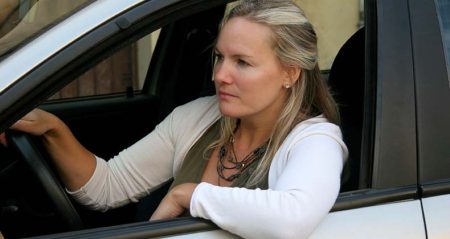Not all debts are bad ones. But bad debts can hang heavy around your neck and create long-term financial strain.
Here’s the good news about bad debt: You can reduce it.
When you have a clear view of your outstanding accounts and amounts, you can use the following tips to get out of debt.
1. Re-examine spending habits
Your spending is divided between “need to have” and “nice to have.” “Need to have” means food, shelter, utilities, transportation and clothing. “Nice to have” is everything else.
While whittling down your debt, you can’t slack off on your “need-to-have” expenditures. But you can decrease your “nice-to-have” spending and use that extra toward a credit card or loan balance.
Cancel that gym membership you don’t use. Cut back on meals out or the daily coffee. Get rid of that streaming subscription you don’t use. Eliminating a $15-per-month streaming subscription gives you an extra $180 a year, which you can dedicate to debt.
2. Determine the right payoff approach for your situation
The common approaches to paying down debt are snowball and avalanche.
Debt snowball – smallest first
Through the debt snowball strategy, you make minimum payments on all credit accounts and loans — except for the account with the smallest balance, where you put all extra dollars. Once you’ve paid that balance, turn to the account with the next-smallest balance and work on that. Continue this approach until your debt is gone.
As you pay off balances, the amount available “snowballs” into a larger sum, allowing you to pay accounts down more quickly.
The snowball strategy’s main benefit is the quick wins. Seeing a credit card balance at zero within a few months can motivate you to continue. But while you’re paying off smaller amounts, your higher-interest-rate account balances continue to grow, making this method potentially costlier.
Debt avalanche – starting big
With the debt avalanche strategy, you make minimum payments to all accounts. Your primary focus and dollars go to the highest interest-rate balance. Once the balance reaches zero, concentrate on the card or loan with the next-highest interest rate and whittle that down.
The debt avalanche approach eliminates the most expensive debts first, which helps you save on interest payments. However, this strategy requires motivation and perseverance. Your higher-interest-rate accounts could also be the largest balance accounts, which could take longer to pay off.
3. Go beyond the minimum
Paying more than the minimum on a credit card or loan means the account hits a zero balance faster, — and you save on the extra generated by interest rates.
Let’s say your credit card has a 20 percent interest rate and a $5,000 balance. If you make a monthly payment of $100 on that balance, it will take more than nine years (109 months) to pay it off. However, increasing that payment to $200 reduces the payoff time to just two and three-quarters years (33 months).
Paying more than the minimum can also lower your credit utilization ratio. This percentage represents how much credit you use relative to how much you have. A lower utilization ratio improves your credit score.
Bankrate’s credit card payoff calculator can help you determine minimum payment amounts, interest accrual and how long it takes to pay off a balance.
Reducing spending is one way to generate extra cash. You can also use unexpected amounts, large and small, to reduce those debt balances.
Using the windfall
If you’ve received a windfall like a large cash infusion from a tax return, work bonus or money from a generous relative, put some of it toward the debt you owe and keep a little to treat yourself to a night out or other fun activity. Every little bit helps when working toward your debt-payoff goals.
Generate small savings
You can also make a dent in debt with the debt snowflake strategy. This method requires you to find small savings and direct those little extras toward debt. There are plenty of ways to do this, like:
- Buying generic products
- Using coupons for purchases
- Carpooling to save on gas
- Reducing water and electricity usage
No, a few dollars a week won’t clear your debt overnight. But think about how many snowflakes can create large snow drifts. In the same way, small savings can help reduce what you owe.
5. Consider debt consolidation methods
Using a debt consolidation loan or transferring what you owe to a 0 percent APR credit card is one way to handle your debt. Both of these methods let you pay off multiple creditors and lenders, leaving you with a single monthly fee that goes toward the balance of the loan or card.
This approach can make budgeting easier (you’re eliminating multiple payments for one). You could also find yourself with more funds to make that payment, as you’ve eliminated multiple credit card and lender interest rates.
However, pay attention to information like interest rates and loan terms (i.e., the time you have to pay) before signing on the dotted line.
6. Embark on a debt management plan
A debt management plan (DMP) can help you in the following ways:
- You work with a credit counseling agency to develop a budget to manage your finances.
- That agency works with creditors to negotiate concessions like fee waivers or reduced interest rates.
- If the creditors agree to cooperate, you make one monthly payment to the credit counseling agency, which pays each creditor.
There are a couple of caveats here. First, reputable DMP agencies are nonprofit, but you’ll likely pay a fee attached to your monthly payments.
Second, it’s not a good idea to open new lines of credit or take out loans while on the plan. You’re using the DMP to pay off debt, not accrue more. Also, if you recently entered a DMP (which might be reflected on your credit report), lenders and creditors might be reluctant to give you a loan or credit card. Those that do might only offer rates for bad credit, which means a higher annual percentage rate (APR) or fee.
7. Settle for less than what you owe
A debt settlement program means that you reach out to creditors to settle for less than what you owe.
You can either do the job yourself or go through a third-party debt-settlement company that negotiates with creditors on your behalf. Depending on the terms of the agreement, you could end up paying less than what you owe (through a lump sum) or see interest rates and fees reduced or waived.
Jennings commented that debt settlement can be an option for those unable to meet payment obligations. However, “it may significantly impact credit scores and could have tax implications on the forgiven debt,” he said.
The bottom line
Bad debt isn’t desirable. But it’s possible to get rid of it. Following the above strategies can help you reduce your debt while improving your financial health. While you’re paying down debt, examine and modify behaviors that got you there in the first place to prevent going down the same road when your balances are paid in full.
Frequently asked questions
-
Too much debt is a concern if you rely on credit cards for everyday purchases or use them to pay off other debts. It’s also troublesome if you can only make minimum payments on those cards.
According to Qualified Financial Advisor (QFA) and CFA Charterholder Ian Jennings, debt can also have an emotional impact. “Financial strain can lead to strained relationships, reduced quality of life and limited financial freedom,” Jennings said. “Managing and reducing debt is vital for overall well-being and achieving financial security.”
-
Not necessarily, but don’t let that stop you from taking steps to lower your debt.
When determining credit health, the Fair Isaac Corporation (FICO) emphasizes your payment history, which represents 35% of an entire credit score. Meanwhile, 30% of that score is your credit utilization, or what you owe vs. how much credit you have.
Even if you pay everything on time, your credit score could suffer if you’ve maxed out your credit cards (which could be the case with a lot of debt). Use no more than 30% of all credit to build your credit score. For example, if your total credit is $5,000, keep your debt below $1,500.
-
One effective budget for paying off debt is the 50/30/20 method. With this approach, 50% of your net income goes for your “need-to-have” expenses, with 30% going toward discretionary spending (non-essential expenses). The remaining 20% is used to build savings and reduce debt.
If you want to pay off debt more quickly, consider taking part of that 30% and putting it toward your credit card balances.
Read the full article here










